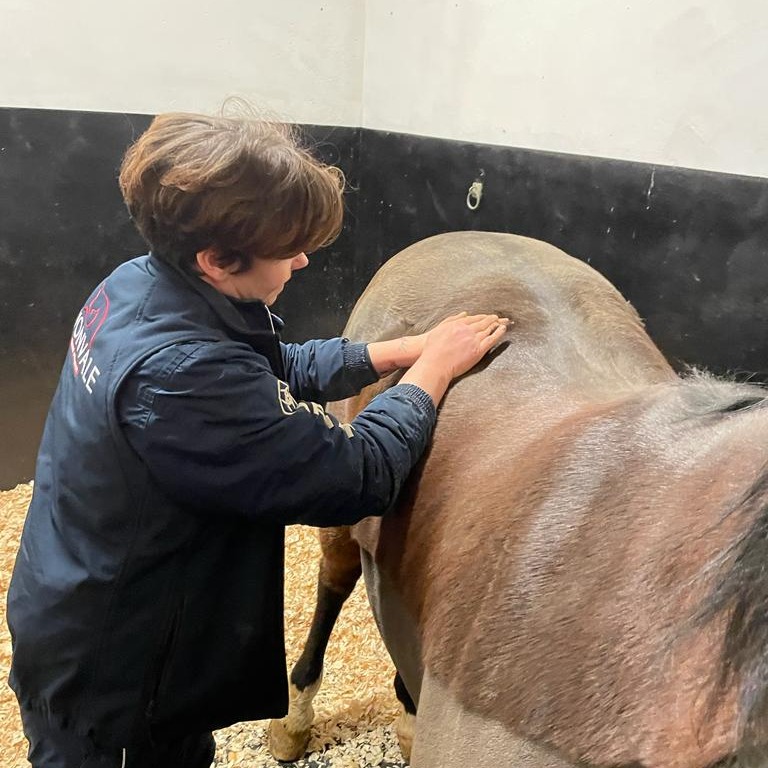Physiotherapy is a form of treatment used on domestic animals and humans to relieve discomfort and improve athletic function. Equine physiotherapy is an approach used to help improve a horse’s performance and, when combined with the necessary veterinary treatment from an equine vet practice, it can be an extremely effective treatment. Are you wondering whether your horse could benefit from equine physiotherapy? This blog post will tell you all you need to know.
What is Equine Physiotherapy?
Equine physiotherapy is both a targeted and holistic approach, carried out by a registered equine physiotherapist. It uses a broad spectrum of techniques including soft tissue manipulation, physical manipulation, electro therapies and rehabilitative exercises to achieve the desired outcome.
Physiotherapists are trained to critically evaluate a horse’s posture and movement - both when at rest, in-hand and when ridden, and to spot subtle signs of discomfort. An equine physiotherapist will also manually assess the horse to identify areas of tension, pain, spasm and previous injury, allowing them to assess which treatments will be most suitable and effective.
The number and type of techniques a therapist uses will vary between therapists, as it is dependent on the training (CPD) they have had throughout their career.
The aim of equine physiotherapy is to:
• increase joint mobility (Range of Motion)
• relieve muscle tension
• enhance the blood and nerve supply
• stimulate the body’s own healing mechanisms
• improve muscle strength
• retard muscle atrophy (wasting)
• remodel scar tissue
• prevent or manage compensatory musculoskeletal problems or complications
How does Equine Physiotherapy Differ from Other Treatments?
Equine physiotherapy differs from both chiropractic and osteopathic treatments because it specialises in rehabilitative techniques and programs following injury and surgery. Physiotherapy can include a variety of rehabilitative exercises including stretches, pole work and ridden exercises which the owner is able to carry out themselves.
Physiotherapy can also be used as a preventative to ensure that injury or related dysfunction does not affect the horse in the future.
Equine physiotherapists are required to work alongside the vet and owner in order to understand the history of the horse. This helps them to identify any previous accidents, injuries or illnesses that may have caused some long-term postural or movement issues, where sometimes the cause and effect can seem remote.
Does my Horse Need Equine Physiotherapy?
Any horse can benefit from physiotherapy, from high-level competition horses to happy hackers. When one or more systems ‘break down’, the horse is no longer able to perform to their full potential, and the owner, rider and trainer will likely notice a decline in performance during training and competition.
The higher the level of competition, the greater the impact will be from the smallest changes in a horse’s health. The challenge is to detect and treat these changes before they become a significant problem that could lead to injury or lameness. Horses that are expected to perform to a high level should be seeing a physiotherapist regularly.
In addition to a physiotherapist helping to keep your horse in peak condition and to avoid injury in the first place, a treating vet who has identified a cause of lameness or poor performance, such as hock arthritis, may choose to refer a horse to a physiotherapist for complementary treatment.
So, while top competition horses are likely to benefit hugely from physiotherapy, happy hackers, riding club and lower-level competition horses could also see regular physiotherapy prolonging their working lives.
Find Out More About Physiotherapy for Horses
The Association of Chartered Physiotherapists in Animal Therapy (ACPAT) provides more information on physiotherapy for horses and other animals on its website.








